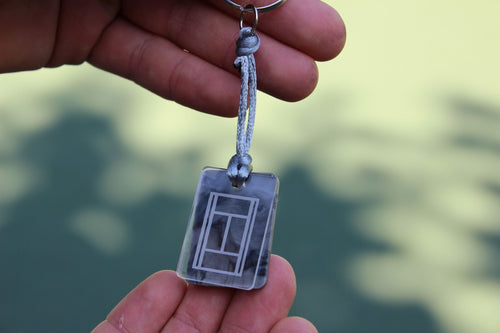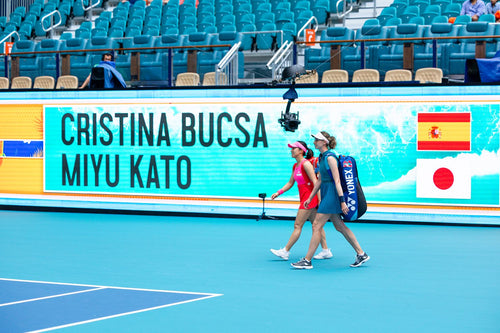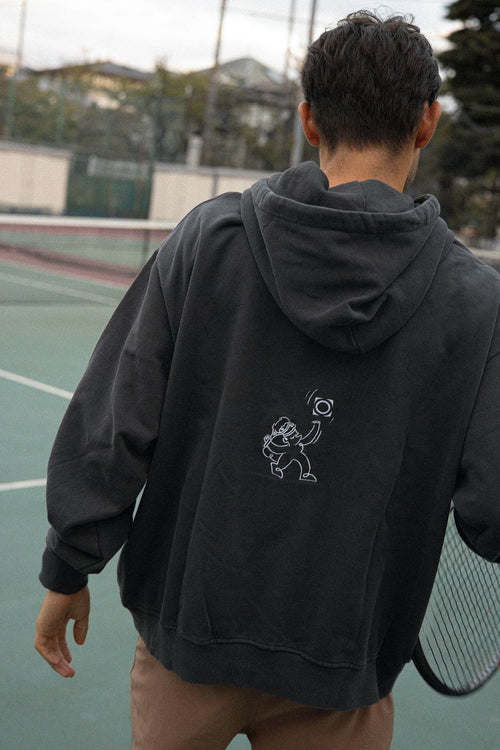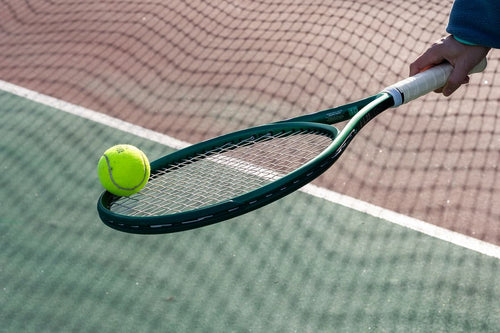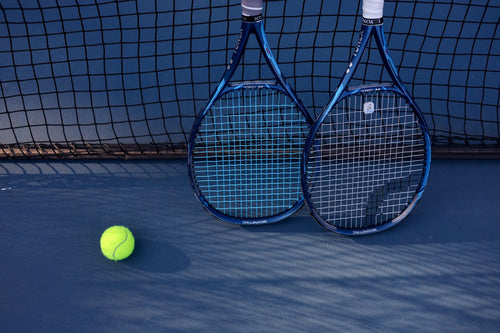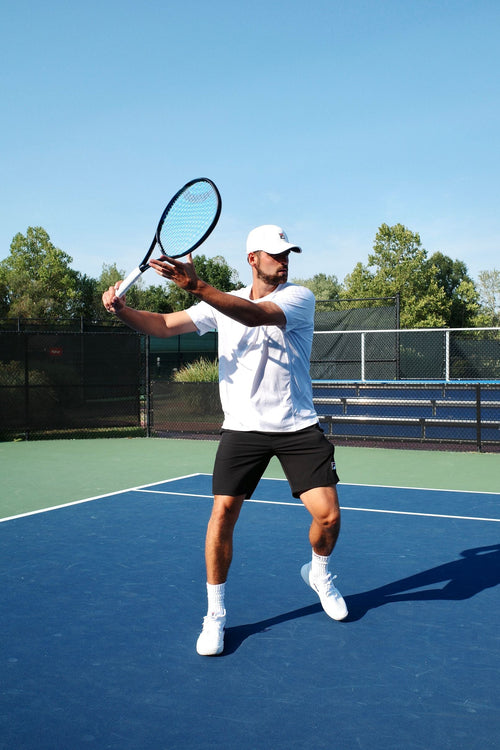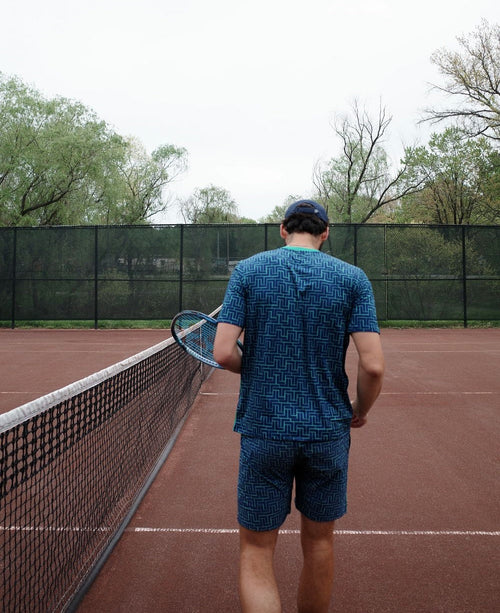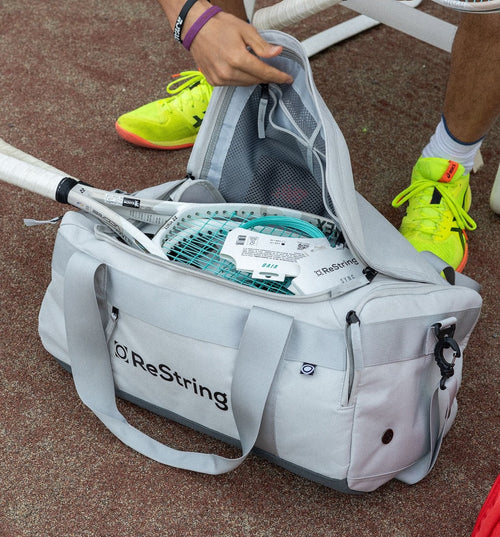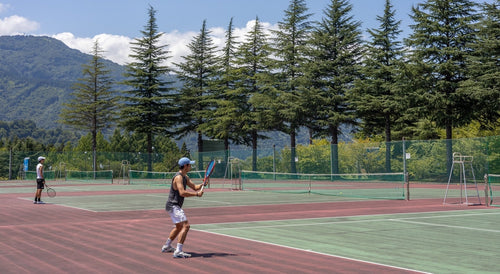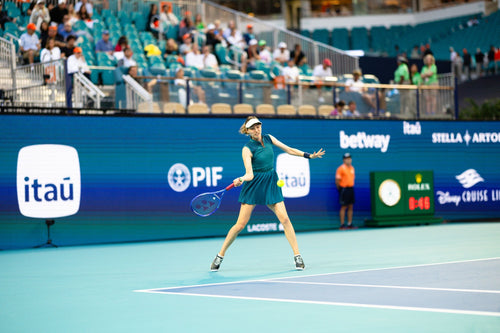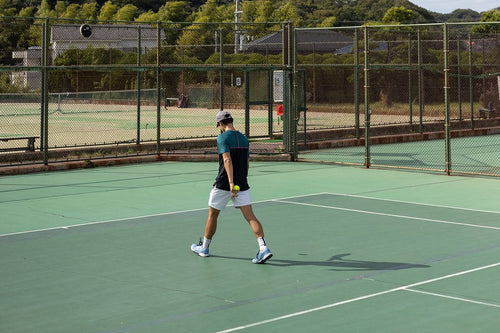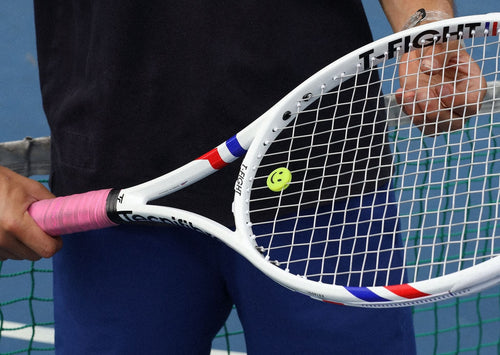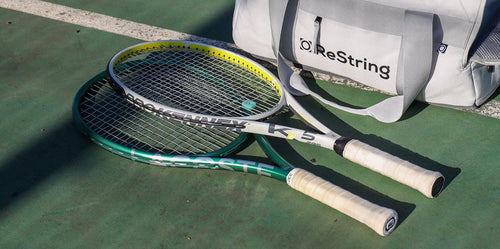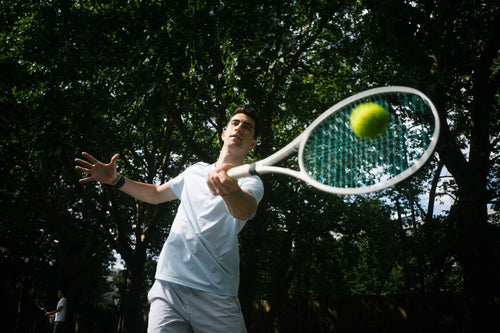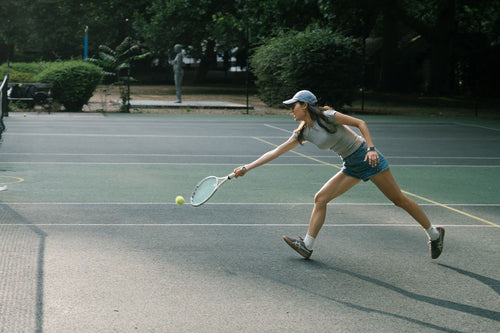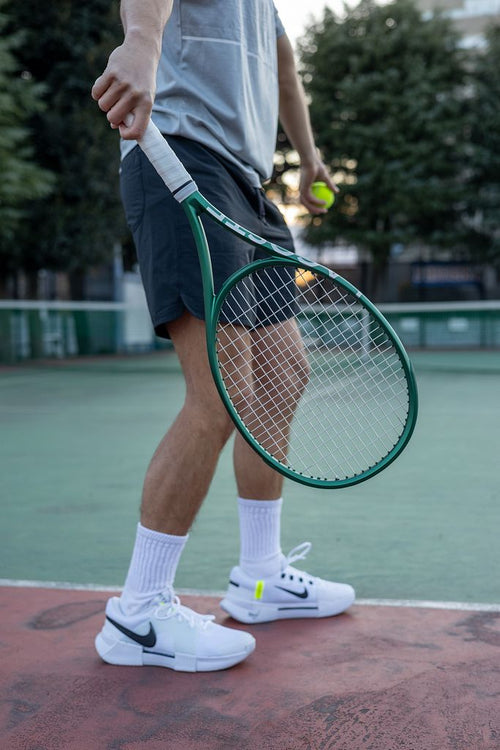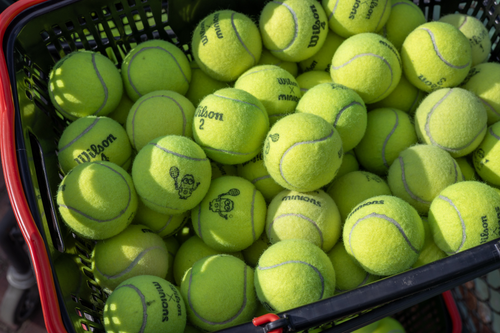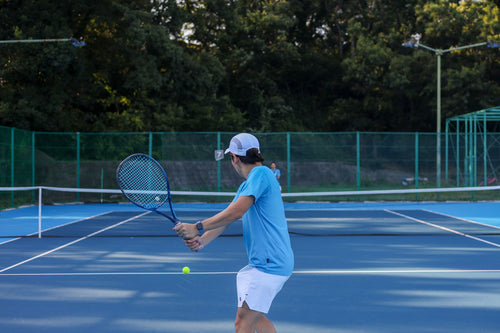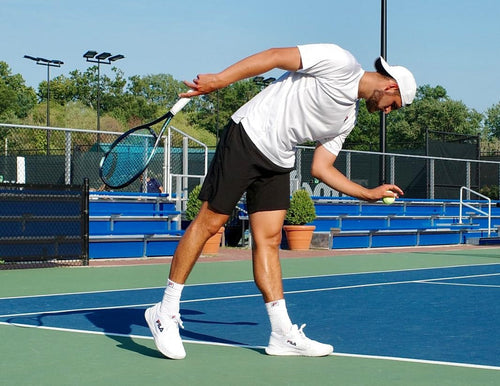How To Strategically Serve in Tennis
Juan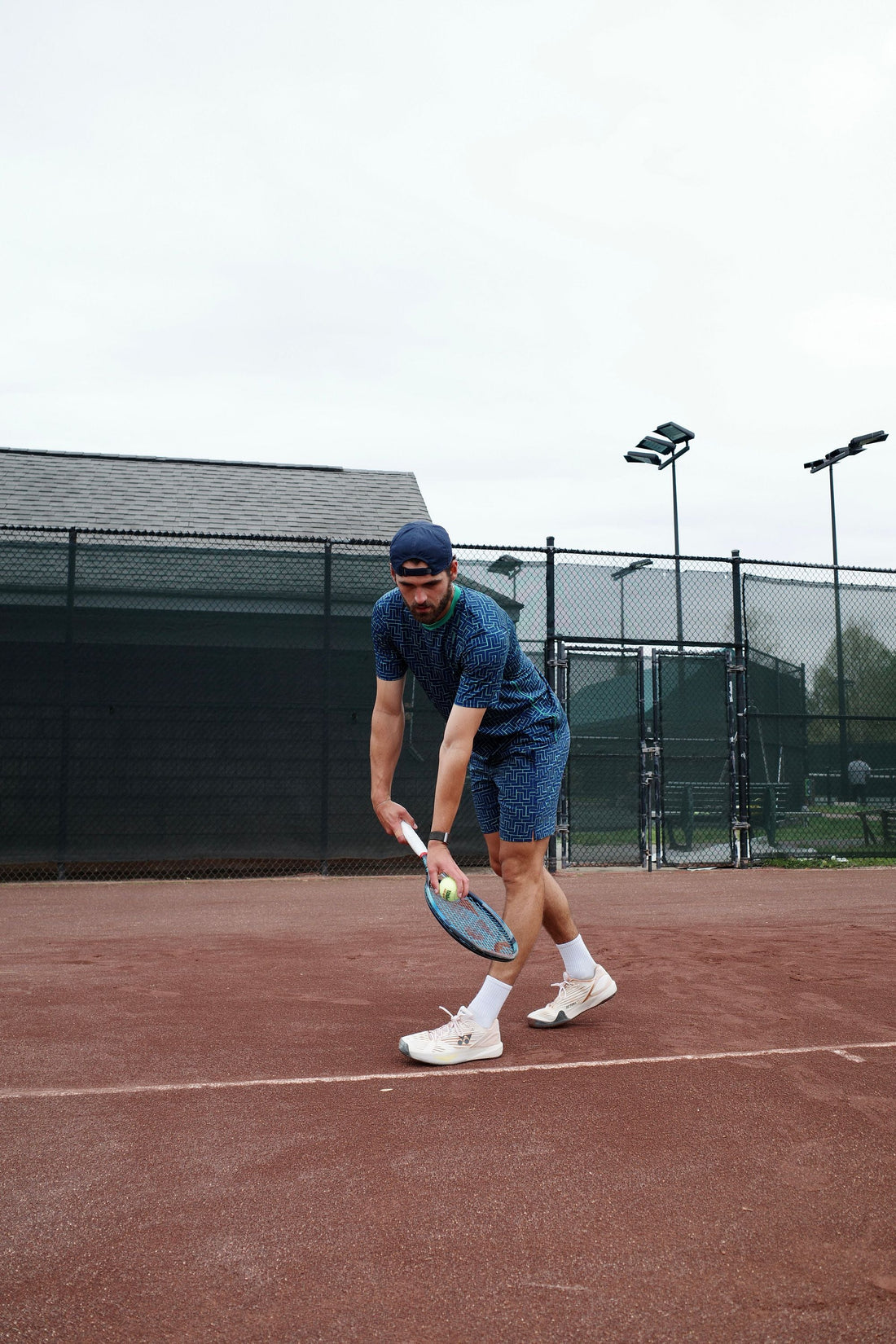
Your serve is the only shot in tennis where you have complete control. No opponent dictating pace, no unpredictable bounces, just you and the ball.
Yet most recreational players treat it like a formality instead of the weapon it can be.
In this article you will learn the five fundamental steps to executing a proper serve, the four main serve types, and three advanced strategies you can use to win more service games.
Steps To Serve in Tennis
1. Grip
A continental grip is considered ideal for serving because it facilitates proper pronation for speed and accuracy. Top professionals universally use this grip.
The easiest way to find yourself in this grip is to slide your hand down the side of the frame and hold the racket like a hammer.
While other grips like Western and Eastern might feel more natural at first, transitioning to a continental grip is recommended for long-term game development.
2. Stance
You have two stance options, each with distinct advantages.
Platform Serve: The legs remain planted throughout the motion, as seen with players like Federer and Djokovic. This stance offers more stability and consistency.
Pinpoint Serve: The legs come together before launching upward, as demonstrated by Nadal and Zverev. This stance can generate more upward momentum and power.
Interestingly, Jannik Sinner started his career with a platform serve and then the year he became world number one, he transitioned to a pinpoint serve.
There's no right or wrong answer here, just go with what feels most comfortable for your body.
3. Toss
The ball toss determines everything that follows. An inconsistent toss means you can never be consistent in your service game.
The toss height and placement will vary slightly depending on which serve type you're hitting. But for now, focus on making the motion smooth and repeatable every time.
4. Hit
Hit the ball at the highest point in the air to generate the best angle over the net while still directing the ball into the opposite side service box.
Make sure to keep your eye on the ball at all times and hit with confidence.
5. Follow-Through
Let your momentum flow naturally into the follow-through, rotating your hips and aligning your body toward where you want the ball to land. Your hitting arm should finish across your body on the opposite side.
Also land on your front foot and step into the court. This forward momentum positions you better for the next shot while adding extra pace to your serve.
Types of Tennis Serve
Now you know how to serve, you can start to be strategic in your serve selection. Each serve type has specific applications that can exploit different court surfaces and playing styles.
Flat Serve
This serve is fast but has a low margin for error, typically used as a first serve. The ball travels in a relatively straight line with minimal spin, maximizing speed at the cost of net clearance.
Perfect for fast court surfaces like grass, seen at Wimbledon. The low bounce and quick pace give opponents less time to set up their return.
Topspin Serve
This serve has high net clearance and a significant jump after bouncing, making it suitable for both first and second serves. The forward rotation pulls the ball down into the service box while creating an aggressive kick off the court surface.
Perfect for clay courts and bouncy hard courts that accentuate spin. The higher bounce pushes opponents back and forces them to contact the ball above their comfort zone.
You'll want to choose spin-engineered strings like Zero or Vivo to get the best results with this type of serve.
Slice Serve
This serve creates side spin. The sideways rotation curves the ball through the air before it skids away or towards your opponent on contact with the court.
Right-handed players generate natural slice to the left, left-handed players generate natural slice to the right. This spin pattern is particularly effective when serving wide.
Underhand Serve
Cheeky serve where you catch your opponent out by serving underhanded.
While unconventional, this serve is used occasionally by pros and has legitimate tactical value when opponents position themselves too far behind the baseline.
Advanced Tennis Serve Strategies
Understanding where to place your serve matters just as much as how you hit it. High-level players use three primary target zones to construct points from the service line.
Aim Towards The T
Aiming down the middle of the service box creates several tactical advantages.
The distance serving to the T is shorter than the distance serving wide, meaning the returner has less reaction time and makes it harder for them to return.
If you're right-handed you want to use a flat or topspin serve on the deuce side and flat or slice serve on advantage side to bounce the ball even further away from your opponent's reach in the centre of the court. Opposite sides work for left-handers.
For doubles the T serve is the best and most used. You close out all angles on the court and force your opponent to hit it back centrally, opening up opportunities for your doubles partner.
Send Your Opponent Wide
Aiming wide pulls your opponent off the court and creates space for your next shot.
If you're right-handed, you want to use a slice serve on the deuce side and topspin serve on advantage side to push your opponents further off court. The spin exaggerates the angle, and maximizes the effectiveness of this serve. Opposite sides work for left-handers.
The tactical payoff of this serve comes on your second shot. With your opponent stretched wide, if they manage to return it, the entire opposite side of the court opens up for a winner.
Power It Into The Body
Aiming directly at the opponent reduces their options and creates awkward contact.
You can power the ball straight into your opponent to catch them off-guard. When the ball comes at their body, they can't extend their arms properly and struggle to generate any pace or direction.
You force them to hit a return right down the middle back to you if they make it back at all. This puts you in a perfect position to distribute the next play anywhere on the court while they're still recovering.
You can also play around with deception by pretending you're aiming for the T but executing a right-handed slice serve on the deuce side to bring the ball into your opponent's body. Similarly, fake a wide serve and use a right-handed topspin serve to catch your opponent leaning the wrong direction.
Conclusion
Your serve transforms from a simple way to start the point into a strategic weapon when you master proper technique and understand placement principles.
The five fundamental steps provide the foundation for consistency, while the four serve types give you tactical variety to exploit different situations. The three advanced strategies let you construct points intentionally rather than hoping for errors.
If you want more spin on your serves, check out Zero and Vivo. Both of these spin-friendly strings will help you serve your next ace.
About the Author: Juan is the co-founder of ReString. He was born in Argentina, raised in Japan, and moved to the US to pursue college tennis. He now plays as an ATP & WTA hitting partner.

